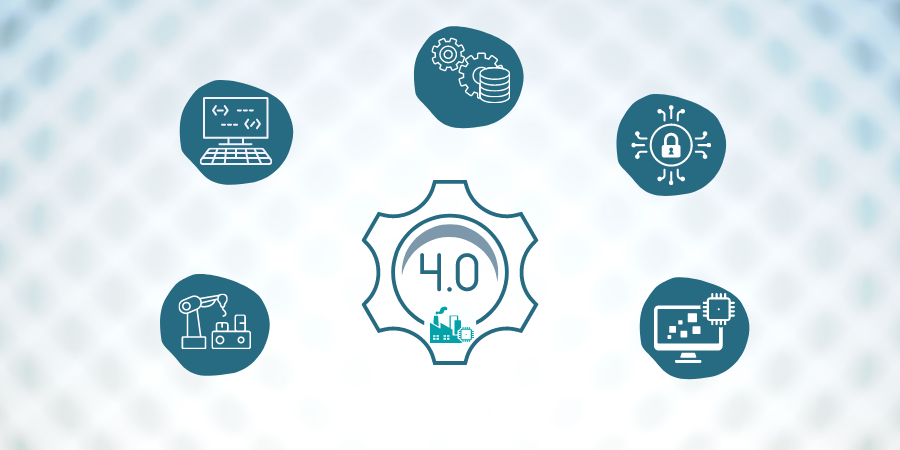
Introduction
Internet of Things (IoT) is an ecosystem that entails integrating digital sensors and networking technology into the analog devices and systems we use every day. Smart thermostats, smart cities, smart agriculture, and Amazon's Alexa-powered gadgets, such as the Echo smart speaker, are some of the most well-known consumer examples.For instance, smart thermostats contain sensors in several rooms and connect to your phone and the Internet to provide more temperature control. They can also be linked to algorithms that manage the temperature when you're not at home or according to weather trends. When you depart, they can even "sense" you.
The Internet of Things can comprise everything from building temperature management systems to sensor-enabled trucks to digital production control systems in the commercial and administrative ecosystems.
With its unique properties, the Industrial Internet of Things is causing huge disruptions in industrial applications. It dramatically improves factory operating efficiency and workflows by monitoring assets and processes in real-time.
Adding more value, the Industrial Internet of Things (IIoT) opens up a host of possibilities for industrialists to improve their businesses manifold.
Among the possibilities are:
- Factory automation is becoming more common
- Process Improvement
- Intelligent manufacturing
- Monitoring of results
Evolution of Industry 4.0 with IoT
Interconnectivity, automation, and real-time data monitoring and exchange are part of Sector 4.0, which aspires to make the industry smarter. Because Industry 4.0 is fully consumer-centric, manufacturers will have to put extra effort into providing priceless customer experiences and services.
Product visioning, product sales, production, assembly, and service management are all covered by industry 4.0's customer-centric approach. IoT makes this procedure facilitated by assisting the owner in staying current with the always-changing demands and expectations of customers.
The fundamental phases of IoT and industry 4.0 evolution include;
- Making things connected
- Producing insights
- Optimizing business operations and processes
- Innovation
The primary goal of the Internet of Things is to make everything smart, whether it's a home, a building, healthcare, or a factory.
Cybersecurity, Augmented Reality, autonomous robotics, digital twins, cloud computing, Big Data, connected gadgets, medical devices, software-defined business processes, and heavy machinery are all part of industry 4.0. The key intersection point of industry 4.0 and IoT is connected devices, smart factory grids, and heavy machinery.
IIoT enables industries and enterprises to attain maximized efficiency, enhanced visibility, accuracy in their operations, and greater system integration in automation and optimization.
The control and monitoring of physical devices for industrial operations (across agriculture, healthcare, transportation, manufacturing, etc.) are becoming easier via the utility of smart sensors and remote access and control.
Industry 4.0: An Overview
The fourth industrial revolution, or industry 4.0, is an elemental system of how cyber-physical infrastructure and production systems are coupled to transform industries using big data and analytics.
Industrialists exploit real-time data collected from IoT sensors and various sources to make effective decision-making along with actionable insights. Smart devices are enabled to acquire and automate manual tasks.
The constant compilation and transmission of data from smart devices and machines provide multiple growth opportunities. For example, relevant data assists experts in detecting errors or inefficiencies in the supply chain to address those immediately and push steady productivity in operations and processes.
Connected smart devices allow businesses to accumulate and evaluate massive data faster. This enhances scalability and performance and reduces the difference amidst production floors and particular offices.
Advantages of Implementing IoT In Industries
Increased Productivity
One of the most significant advantages of IoT is increased efficiency. It is capable of increasing operational efficiency through the optimization of industrial processes. It also can automate, increase efficiency, and streamline factory operations. Sensors implanted in production assets are used to track their performance in order to adjust and improve them as needed.
Maintenance that is Planned in Advance
The performance and usability of assets have a significant impact on industrial production. Predictive maintenance facilitated by IoT adoption can assist process managers in forecasting and responding to an asset's workability to avoid long-term damage to productivity and operations.
IoT sensors installed in factory assets track their performance in real-time and warn the manager if a problem is discovered.
Data Monitoring in Real-time
The real-time working and performance of the assets may be monitored, allowing for necessary changes in the process to boost product output and quality. Furthermore, real-time data monitoring aids in decision-making and increases factory operational efficiency.
Cost-cutting
Predictive maintenance and real-time data monitoring characteristics of IoT greatly help reduce cost by enabling machinery to complete activities without human supervision. As the amount of human intervention is reduced, errors are reduced as well, lowering the cost.
Swift Information Circulation
Many business experts have deployed IoT in their business structure to process the information flow faster within the organization premises. Earlier, the information silos disappeared, were misconfigured, or disorganized, due to which a smooth connection within business and floor gets broken.
This disconnection of information gets converted in the real-time notification, automated business intelligence dashboard, real-time accessibility of relevant data, and allows managers to respond/act concerning changing production needs.
Conclusion
IoT has gained immense popularity in industry-specific use-cases and miscellaneous applications. Being an ideal innovation, technology has elevated individuals’ living standards, due to which the demand for IoT integrated industries has accelerated under industry 4.0.Today, when the automation industry is expanding exponentially, IoT has emerged as a powerful tool to increase productivity, operational efficiency, time efficiency, advanced management, and data monitoring in real-time.
Aimed to reduce expenditure and increase outcomes, IIoT has set the benchmark for healthy competition across the industries. By offering multiple benefits, IIoT has outpaced industry expectations. An IoT landscape is anticipated to adopt more technologies in the coming years; its prominence guarantees strong business growth in the industrial domain.

 Batoi Corporate Office
Batoi Corporate Office